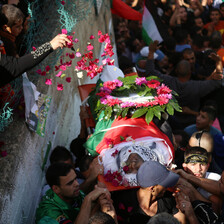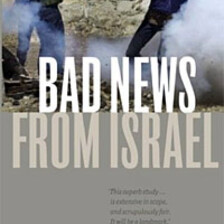The Independent 26 January 2003
On the road to Basra, ITV was filming wild dogs as they tore at the corpses of the Iraqi dead. Every few seconds a ravenous beast would rip off a decaying arm and make off with it over the desert in front of us, dead fingers trailing through the sand, the remains of the burned military sleeve flapping in the wind.
“Just for the record,” the cameraman said to me. Of course. Because ITV would never show such footage. The things we see - the filth and obscenity of corpses - cannot be shown. First because it is not “appropriate” to depict such reality on breakfast-time TV. Second because, if what we saw was shown on television, no one would ever again agree to support a war.
That of course was in 1991. The “highway of death”, they called it - there was actually a parallel and much worse “highway of death” 10 miles to the east, courtesy of the US Air Force and the RAF, but no one turned up to film it - and the only true picture of the horrors we saw was the photograph of the shrivelled, carbonised Iraqi soldier in his truck. This was an iconic illustration of a kind because it did represent what we had seen, when it was eventually published.
For Iraqi casualties to appear on television during that Gulf War - there was another one between 1980 and 1988, and a third is in the offing - it was necessary for them to have died with care, to have fallen romantically on their backs, one hand over a ruined face. Like those First World War paintings of the British dead on the Somme, Iraqis had to die benignly and without obvious wounds, without any kind of squalor, without a trace of shit or mucus or congealed blood, if they wanted to make it on to the morning news programmes.
I rage at this contrivance. At Qaa in 1996, when the Israelis had shelled Lebanese refugees at the UN compound for 17 minutes, killing 106 civilians, more than half of them children, I came across a young woman holding in her arms a middle-aged man. He was dead. “My father, my father,” she kept crying, cradling his face. One of his arms and one of his legs was missing - the Israelis used proximity shells which cause amputation wounds - but when that scene reached television screens in Europe and America, the camera was close up on the girl and the dead man’s face. The amputations were not to be seen. The cause of death had been erased in the interests of good taste. It was as if the old man had died of tiredness, just turned his head upon his daughter’s shoulder to die in peace.
Today, when I listen to the threats of George Bush against Iraq and the shrill moralistic warnings of Tony Blair, I wonder what they know of this terrible reality. Does George, who declined to serve his county in Vietnam, have any idea what these corpses smell like? Does Tony have the slightest conception of what the flies are like, the big bluebottles that feed on the dead of the Middle East, and then come to settle on our faces and our notepads?
Soldiers know. I remember one British officer asking to use the BBC’s satellite phone just after the liberation of Kuwait in 1991. He was talking to his family in England and I watched him carefully. “I have seen some terrible things,” he said. And then he broke down, weeping and shaking and holding the phone dangling in his hand over the transmission set. Did his family have the slightest idea what he was talking about? They would not have understood by watching television.
Thus can we face the prospect of war. Our glorious, patriotic population - albeit only about 20 per cent in support of this particular Iraqi folly - has been protected from the realities of violent death. But I am much struck by the number of letters in my postbag from veterans of the Second World War, men and women, all against this new Iraqi war, with an inalienable memory of torn limbs and suffering.
I remember once a wounded man in Iran, a piece of steel in his forehead, howling like an animal - which is, of course, what we all are - before he died; and the Palestinian boy who simply collapsed in front of me when an Israeli soldier shot him dead, quite deliberately, coldly, murderously, for throwing a stone; and the Israeli with a chair leg sticking out of her stomach outside the Sbarro pizzeria in Jerusalem after a Palestinian bomber had decided to execute the families inside; and the heaps of Iraqi dead at the Battle of Dezful in the Iran-Iraq war - the stench of their bodies wafted through our helicopter until the mullahs aboard were sickened; and the young man showing me the thick black trail of his daughter’s blood outside Algiers where armed “Islamists” had cut her throat.
But George Bush and Tony Blair and Dick Cheney and Jack Straw and all the other little warriors who are bamboozling us into war will not have to think of these vile images. For them it’s about surgical strikes, collateral damage and all the other examples of war’s linguistic mendacity. We are going to have a just war; we are going to liberate the people of Iraq - some of whom we will obviously kill - and we are going to give them democracy and protect their oil wealth and stage war crimes trials and we are going to be ever so moral, and we are going to watch our defence “experts” on TV with their bloodless sandpits and their awesome knowledge of weapons which rip off heads.
Come to think of it, I recall the head of an Albanian refugee, chopped neatly off when the Americans, ever so accidentally, bombed a refugee convoy in Kosovo in 1999 which they thought was a Serb military unit. His head lay in the long grass, bearded, eyes open, severed as if by a Tudor executioner. Months later, I learned his name and talked to the girl who was hit by the severed head during the US air strike and who laid the head reverently in the grass where I found it. Nato, of course, did not apologise to the family. Nor to the girl. No one says sorry after war. No one acknowledges the truth of it. No one shows you what we see. Which is how our leaders and our betters persuade us - still - to go to war.

